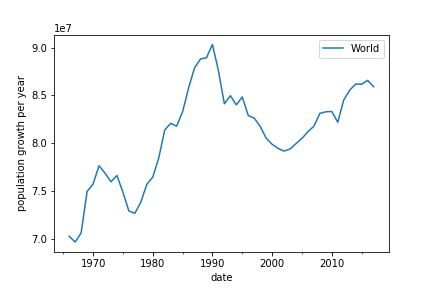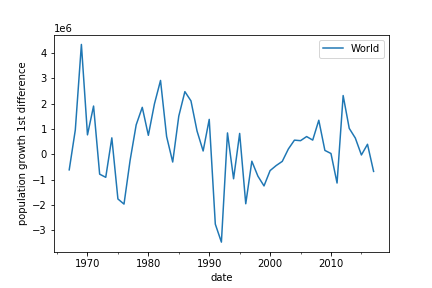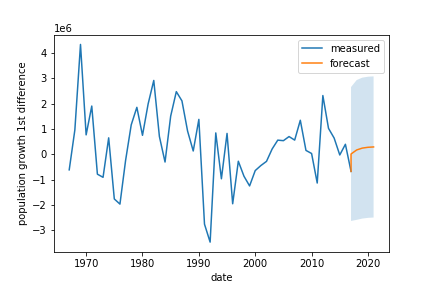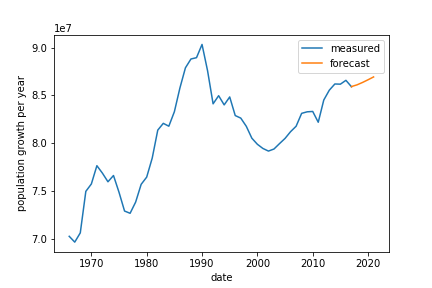Introduction to ARIMA models
ARIMA Models in Python

James Fulton
Climate informatics researcher
Non-stationary time series recap

Non-stationary time series recap

Forecast of differenced time series

Reconstructing original time series after differencing
diff_forecast = results.get_forecast(steps=10).predicted_meanfrom numpy import cumsummean_forecast = cumsum(diff_forecast)
Reconstructing original time series after differencing
diff_forecast = results.get_forecast(steps=10).predicted_meanfrom numpy import cumsummean_forecast = cumsum(diff_forecast) + df.iloc[-1,0]
Reconstructing original time series after differencing

The ARIMA model
- Take the difference
- Fit ARMA model
- Integrate forecast
Can we avoid doing so much work?
Yes!
ARIMA - Autoregressive Integrated Moving Average
Using the ARIMA model
from statsmodels.tsa.arima.model import ARIMAmodel = ARIMA(df, order=(p,d,q))
- p - number of autoregressive lags
- d - order of differencing
- q - number of moving average lags
ARIMA$(p,0,q)$ = ARMA$(p,q)$
Using the ARIMA model
# Create model model = ARIMA(df, order=(2,1,1))# Fit model model.fit()# Make forecast mean_forecast = results.get_forecast(steps=10).predicted_mean
Using the ARIMA model
# Make forecast
mean_forecast = results.get_forecast(steps=steps).predicted_mean

Picking the difference order
adf = adfuller(df.iloc[:,0])
print('ADF Statistic:', adf[0])
print('p-value:', adf[1])
ADF Statistic: -2.674
p-value: 0.0784
adf = adfuller(df.diff().dropna().iloc[:,0])
print('ADF Statistic:', adf[0])
print('p-value:', adf[1])
ADF Statistic: -4.978
p-value: 2.44e-05
Picking the difference order
model = ARIMA(df, order=(p,1,q))
Let's practice!
ARIMA Models in Python

